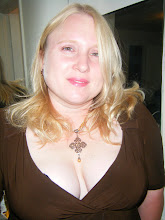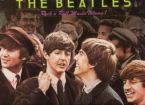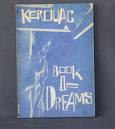Bob Weir talks about Neal Cassady
in this recent interview...check it out....

Excerpt from page 3:
On the road (or streets of San Francisco) with Neal Cassady
One memorable trip of a different sort occurred during the halcyon days of San Francisco's psychedelic era in the 1960s. Weir recalls with fondness some time he spent in a car with Neal Cassady, an icon of the Beat generation.
Cassady was friends with fellow Beat legend Jack Kerouac, who wrote the seminal American novel, "On the Road." The book, in Kerouac's stream-of-consciousness style, was based on their travels, with Cassady as the wild driver Dean Moriarty. In the 1960s, Cassady also drove the bus for author Ken Kesey and his Merry Pranksters.
Beyond being the tale of a great American road trip, "On the Road" has become a bible for countless artists, poets, and musicians, including Weir. Cassady inspired Weir to write two Dead songs -- "Cassidy" and "The Other One" with his lyrics, "There was cowboy Neal at the wheel of the bus to never-ever land."
"Truman Capote says of Kerouac's writing, 'That's not writing, that's typing,' Weir laughs as he mimics Capote's high-pitched voice. "But it rang my bells. It inspired me to leave home for good -- to pursue music. Cassady was quite a figure in American history. Jack Kerouac became enamored of Neal Cassady and rightly so. I won't call him a saint, but he was something."
Neal Cassady. Photo courtesy Herb Green
While "On the Road" had a profound effect on Weir, when he met the book's hero, he wasn't so much starstruck as he was intent on taking it all in. "I got over it pretty quick because every moment was new and fresh," Weir says. "I wasn't busy thinking this was a big deal; I was busy just in wonderment of what was happening."
The depiction of Weir's drives with Cassady sounds familiar to Kerouac fans -- like a page ripped right from the book. Cassady drove a maroon 1964 Oldsmobile F-85 with a V-8 named George, while Weir rode shotgun, careening through the streets of San Francisco. The car belonged to Sue Swanson, a high-school classmate of Weir's, who became the first Deadhead and worked on and off for the band for 30 years.
There was a superhuman quality about Cassady when it came to driving through crowded city streets that amazes Weir to this day. "He defined the term synchronicity -- he was at all places at all times and right here at the same time. I used to ride around the city with him in San Francisco, and he could drive through rush hour traffic at 55-60 miles an hour, never stopping for a red light, never stopping for a stop sign, the wrong side of the street, on the sidewalk, all that kind of stuff. Never hit anything. And he could see around corners."
Long before "multitasking" became vogue, Cassady was king of multitasking in the car. "And all the time he was driving, he had one hand on the wheel, one hand feeling up his girlfriend in the middle seat, and one hand playing the buttons on the radio," Weir says. "What he would bring on the radio -- it was a dialogue with what was going on in my inner voice, and he was aware of all that."
It raises the question of whether he learned a thing or two during those drives with Cassady. "Yeah, I learned something from him," he replies. "The radio had a dialogue with my inner voice. He'd punch the buttons and stuff would come out and it was coherent. Deep stuff."
Cassady was friends with fellow Beat legend Jack Kerouac, who wrote the seminal American novel, "On the Road." The book, in Kerouac's stream-of-consciousness style, was based on their travels, with Cassady as the wild driver Dean Moriarty. In the 1960s, Cassady also drove the bus for author Ken Kesey and his Merry Pranksters.
Beyond being the tale of a great American road trip, "On the Road" has become a bible for countless artists, poets, and musicians, including Weir. Cassady inspired Weir to write two Dead songs -- "Cassidy" and "The Other One" with his lyrics, "There was cowboy Neal at the wheel of the bus to never-ever land."
"Truman Capote says of Kerouac's writing, 'That's not writing, that's typing,' Weir laughs as he mimics Capote's high-pitched voice. "But it rang my bells. It inspired me to leave home for good -- to pursue music. Cassady was quite a figure in American history. Jack Kerouac became enamored of Neal Cassady and rightly so. I won't call him a saint, but he was something."
Neal Cassady. Photo courtesy Herb Green
While "On the Road" had a profound effect on Weir, when he met the book's hero, he wasn't so much starstruck as he was intent on taking it all in. "I got over it pretty quick because every moment was new and fresh," Weir says. "I wasn't busy thinking this was a big deal; I was busy just in wonderment of what was happening."
The depiction of Weir's drives with Cassady sounds familiar to Kerouac fans -- like a page ripped right from the book. Cassady drove a maroon 1964 Oldsmobile F-85 with a V-8 named George, while Weir rode shotgun, careening through the streets of San Francisco. The car belonged to Sue Swanson, a high-school classmate of Weir's, who became the first Deadhead and worked on and off for the band for 30 years.
There was a superhuman quality about Cassady when it came to driving through crowded city streets that amazes Weir to this day. "He defined the term synchronicity -- he was at all places at all times and right here at the same time. I used to ride around the city with him in San Francisco, and he could drive through rush hour traffic at 55-60 miles an hour, never stopping for a red light, never stopping for a stop sign, the wrong side of the street, on the sidewalk, all that kind of stuff. Never hit anything. And he could see around corners."
Long before "multitasking" became vogue, Cassady was king of multitasking in the car. "And all the time he was driving, he had one hand on the wheel, one hand feeling up his girlfriend in the middle seat, and one hand playing the buttons on the radio," Weir says. "What he would bring on the radio -- it was a dialogue with what was going on in my inner voice, and he was aware of all that."
It raises the question of whether he learned a thing or two during those drives with Cassady. "Yeah, I learned something from him," he replies. "The radio had a dialogue with my inner voice. He'd punch the buttons and stuff would come out and it was coherent. Deep stuff."


























No comments:
Post a Comment